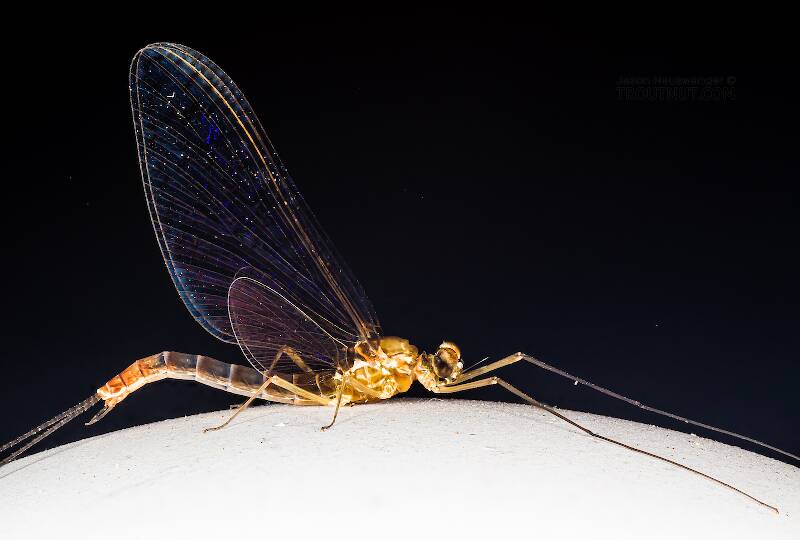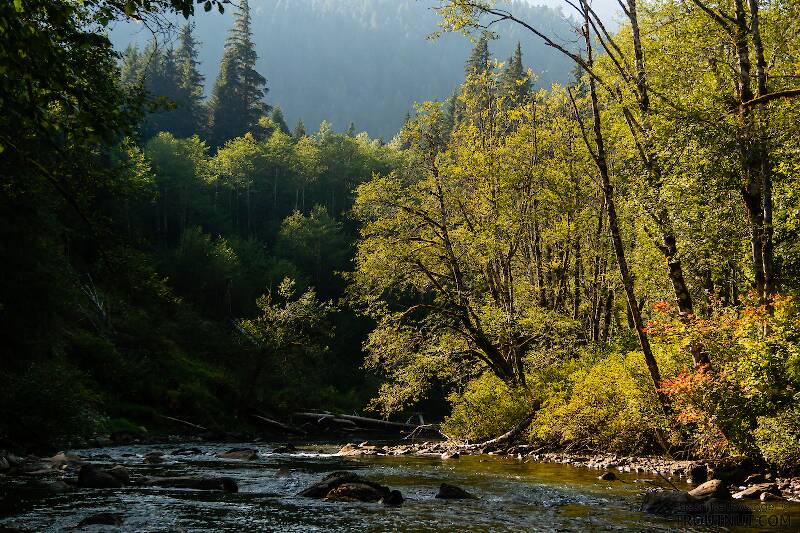
Blue-winged Olives
Baetis
Tiny Baetis mayflies are perhaps the most commonly encountered and imitated by anglers on all American trout streams due to their great abundance, widespread distribution, and trout-friendly emergence habits.

Mayfly Species Cinygmula uniformis
Species Range
Physical description
Most physical descriptions on Troutnut are direct or slightly edited quotes from the original scientific sources describing or updating the species, although there may be errors in copying them to this website. Such descriptions aren't always definitive, because species often turn out to be more variable than the original describers observed. In some cases, only a single specimen was described! However, they are useful starting points.
Male Spinner
Wing length: 10 mm
Very similar to the Cinygmula gartrelli in genitalic characters. Differs at once by the uniform light amber coloration of the entire wings and the lack of heavy cross-veining. Male. Head smoky brown with the pits of the antennae pale ochreous; thorax brown, a slightly paler shade than in gartrelli, with more extended lighter brown shading cephalad of the scutellum; pleural coloration much as in gartrelli. Abdomen dorsally with the hyaline areas on segments II-VII more extended, in consequence the brown posterior banding is narrower and also paler, showing none of the ruddy shades of gartrelli; the opaque posterior segments are almost unicolorous sepia-brown with a fine, blackish, posterior border to VIII. Ventrally very pale ochreous, segments VIII and IX shaded with light ochre-brown; ganglionic marks very faint, slightly ruddy. Forceps and setae light smoky. Legs light brown, the anterior tibia considerably longer than trochanter and femur combined and longer than the same joint in gartrelli; mid and hind femora lightly tinged with ruddy. Wings unicolorous light amber with fine brown veins and crossveins.
Female Spinner
Wing length: 10 mm
Specimens of the Mayfly Species Cinygmula uniformis
1 Male Spinner

Start a Discussion of Cinygmula uniformis
References
- McDunnough, J. 1934. New species of North American Ephemeroptera IV. Canadian Entomologist 66: 154-164.
Mayfly Species Cinygmula uniformis
Species Range
Resources
- NatureServe
- Integrated Taxonomic Information System
- Global Biodiversity Information Facility
- Described by McDunnough (1934)


